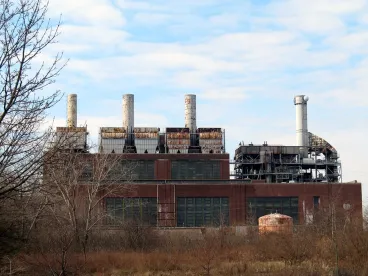Industrial Chemicals
2016 has been a watershed year in Mexico, Central America, and South America, with a variety of chemical substance, pesticide, product stewardship, and worker and workplace safety regulations developing and being implemented at an unprecedented rate. 2017 appears very likely to see these trends continuing, with the “major players” such as Brazil, Argentina and Mexico implementing key pieces of legislation, while countries such as Chile, Colombia, Costa Rica, and Ecuador are expected to take considerable steps toward a variety of management programs.
Following are key areas of legislative efforts throughout the region.
With respect to chemical substance legislation, the Brazilian Ministry of Environment (Ministério do Meio Ambiente (MMA)) has put forth draft legislation titled Industrial Chemicals Regulation (Regulação de Substâncias Químicas Industriais, or Regulação). The Regulação is expected to be presented for a vote before the Brazilian Congress during the first quarter of 2017, but the Brazilian Chemical Industry Association (Associação Brasileira da Indústria Química (ABIQUIM)) has indicated that this timeline is fluid, and that due to other legislative priorities, as well as the dynamic political situation in the country, it is conceivable that the presentation could be delayed even further. According to the draft, the MMA must promulgate the Regulação within 180 days of its publication in the Official Gazette (Diário Oficial), and a three year phase-in period will then ensue. This timeline presumes the relevant portions of the Regulação do not change.
Colombia has suggested chemical substance management to be a priority in the coming year. In late 2016, two bills were put forth in the Chamber of Deputies (Cámara de Diputados). The first bill would regulate hazardous substances manufactured or imported in the country, while the second specifically addresses two substances, lead (restricting its use in certain products) and asbestos (banning the substance entirely). Since their introduction, however, the bills have been consolidated into a single legislative piece regarding hazardous substance management. The new bill retains many key elements of the two individual proposals, but with some modifications. Three provisions in the combined legislation are particularly important to firms either operating in the country or considering establishing business there: first, the authority (to-be-defined) would develop the “National Hazardous Substance Monitoring System” (Sistema Nacional de Vigilancia de Sustancias Peligrosas (SNSN)). Second, the legislation would establish a “take-back” requirement specific to batteries which contain lead or other hazardous substances. Finally, the proposed bill would impose reporting and labeling requirements on producers and sellers of products containing to-be-defined hazardous substances.
Dovetailing with this proposed legislation, the Colombian Ministry of Environment (Ministerio de Medio Ambiente) has issued its 2020 Policy of Risk Management Associated with the Use of Chemical Substances (Política De Gestión Del Riesgo Asociado Al Uso De Sustancias Químicas). One of the manifest goals of the Policy is to fill in gaps in the country’s risk management measures during each stage of the chemical substance life cycle. Of particular note, the Policy makes a specific recommendation for the Ministries of Health, Labor, Commerce, Agriculture, and Transport to develop implementing regulations to have the Globally Harmonized System of Classification and Labeling of Chemicals (GHS) in place in the country by December 2020.
Finally, Costa Rica’s Senate has put forth Executive Decree 28112-S (30718 as amended), “Regulation for the Registration of Hazardous Chemical Products.” The Decree has been proposed in two drafts: Draft 1 includes provisions for the registration and control of hazardous substances, while Draft 2 includes language for the implementation of GHS.
Pesticides
Pesticide regulations, whether for agricultural use (more commonly) or for domestic or urban (public health) use, have a long history in Mexican, Central American, and South American chemical legislation, due in large part to the heavy reliance on agricultural production in the respective countries. 2017 is expected to see further expansion of these regulations, as well as the introduction of new ones, as countries seek more robust legislation.
In late 2016, Chile’s Agriculture and Livestock Service (Service) issued Resolution No. 5482/2016, Establishing Requirements for the Authorization of Pesticides. Of particular note is the language of point number three in the “Considering” section of the legislation: “[t]hat, given the new technical and scientific advances on the subject, it is necessary to update the Technical requirements and guidelines for the authorization of pesticides, based on the new requirements and [EU] criteria, and to the new test guidelines of the [OECD].” This clearly suggests that the Service is aware of how pesticide products are managed in other jurisdictions, and its desire, at least with this legislation, to be in concert with both the EU and OECD on the subject.
Product Stewardship Initiatives
A rapidly-emerging trend in Central and South America in the product stewardship arena is the development of a variety of “take back” legislation. While countries have generally applied such efforts to pesticide containers, regulations are in development that address other applications.
In late 2016, Argentina published the Plant Protection Products Law No. 27279 in the Official Gazette (Boletín Oficial de la República Argentina). As per Article 1, “[t]his law establishes the minimum environmental protection for the management of empty containers, under the toxicity of the product contained, requiring a differentiated and conditional management.” The Law requires all entities that hold a Pesticide Certificate of Use and Sale to, per a registration requirement with the Ministry of Agriculture, to put forth for approval a management system for empty containers, and to implement such a system within 270 days of such system’s approval. Additionally, the pesticide containers must be redesigned to minimize their impact on the environment.
Further, the lower house of the Argentine National Congress is considering bill No. 3279-S-2016 that would establish a comprehensive packaging waste management program, and which, at its core, would include requirements for the creation of management systems and labeling requirements for such waste. As presently written, the bill applies only to household packaging wastes, but exempts those already covered by specific waste standards (e.g., packaging for hazardous materials). Producers -- defined as packagers or importers of packaged products and manufacturers and importers of packaging destined for sale and distribution to consumers -- would be required to create national associations to develop and implement Integral Packaging Waste Management Systems (as delineated in Article 7). These management systems would be funded by mandatory fees to be paid by the producers on a per-package basis, thus encouraging a reduction in the overall amount of household packaging generated. Within one year of the bill’s enactment, the Systems would need to be approved by the to-be-defined authority, and will need to meet the packaging recovery targets (e.g., at least 20 percent within the first year, at least 50 percent within ten years, and so forth).
Finally, in late October 2016, Bolivia published Supreme Decree No. 2954/2016 in their Official Gazette (Gaceta Oficial del Estado Plurinacionnal de Bolivia), the implementing legislation for Law No. 755/2015, The Regulation to the Law for the Integrated Management of Wastes. Similar in overall concept to the Argentinian packaging waste management program, but specifically directed toward waste electrical and electronic equipment (WEEE), the Bolivian Law requires producers of these materials to: register them in a national registry established by the Ministry of Environment and Water (Ministerio de Medio Ambiente y Agua), to develop plans to manage these “post-consumer products,” which will be valid for up to five years, to submit them to the Ministry for approval, and finally to implement them.
Virtually every country in Central and South America has either announced plans to develop similar legislation, or has bills which are already under Congressional discussion. Among these are Brazil, Chile, Colombia, Costa Rica, Ecuador, Mexico, Nicaragua, Panama, Peru, and Uruguay. Notably, Brazil’s São Paulo State’s draft is exceptionally comprehensive, mandating take-back agreements for nine product categories, including certain types of lamps, batteries, automotive filters, vegetable oils, and pesticide packaging. Colombia’s proposed law also addresses WEEE, with the specific requirement that 30 percent of the computers and related peripherals collected annually must be refurbished for reuse in educational and cultural centers. Mexico’s draft specifically identifies products containing Li, Ni, Hg, Cd, Mn, Pb, and Zn, in levels not considered to be hazardous by other regulations, to be “special management waste” subject to management plans. This is particularly noteworthy, as the draft appears to regulate products containing what are traditionally considered to be hazardous materials, even when those levels are below current regulatory limits.
Worker and Workplace Safety
The most visible developments relative to worker and workplace safety in Mexico, Central America, and South America is occurring with respect to the implementation of GHS. Multiple countries across the region have either implemented GHS or are well on their way to doing so. Argentina’s implementation of GHS for substances is scheduled for January 1, 2017, and for mixtures for June 1, 2017. Ecuador will require GHS for both categories on January 1, 2017, while Uruguay presently requires GHS classification for substances, but will require the same for mixtures on December 31, 2017. Mexico’s current three year phase-in plan for GHS ends on October 9, 2018.
Chile continues development of a GHS regulation: entities may either use the legally-binding NCh 2245:2015 SDS regulation, or may classify to the Fifth Revision of the GHS. Costa Rica has put forth draft proposals for GHS legislation, discussed above, while Colombia has publicly stated its desire to begin the legislative process to implement the System. Colombia is expected to amend its classification and labeling regulation, NTC 1692, and its SDS regulation, NTC 4435, to encompass GHS.



 />i
/>i

